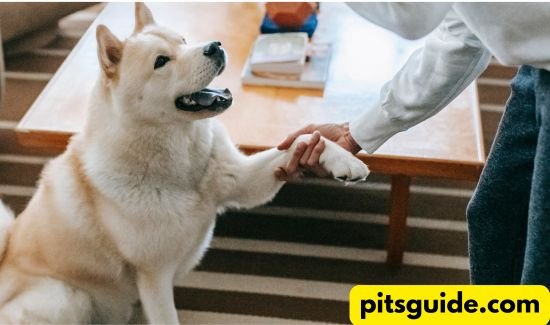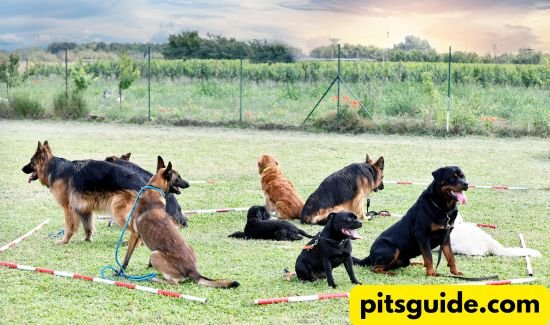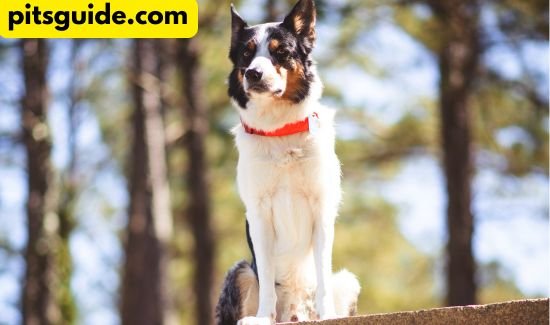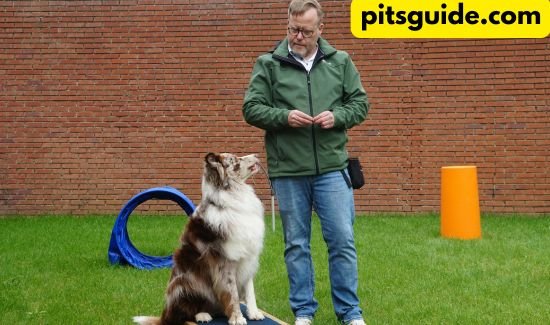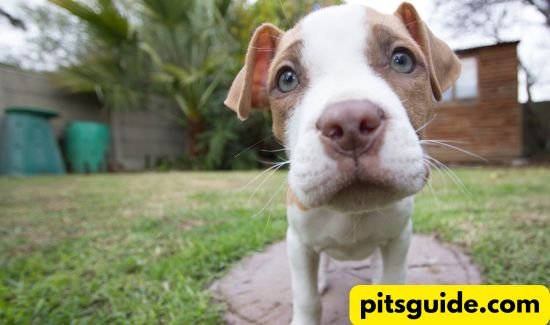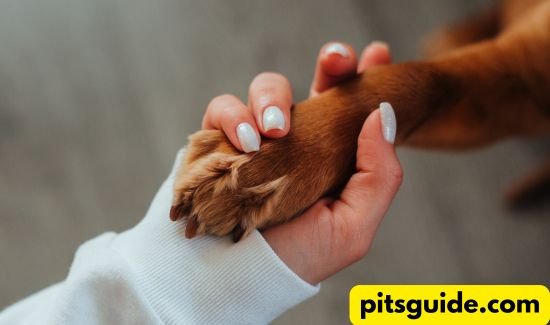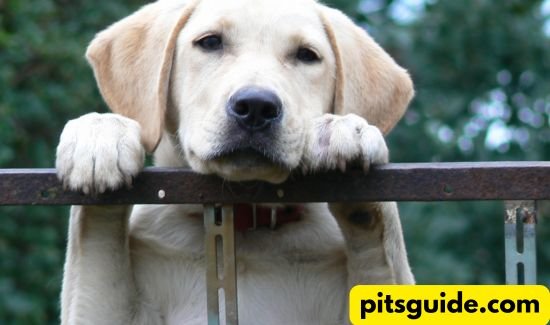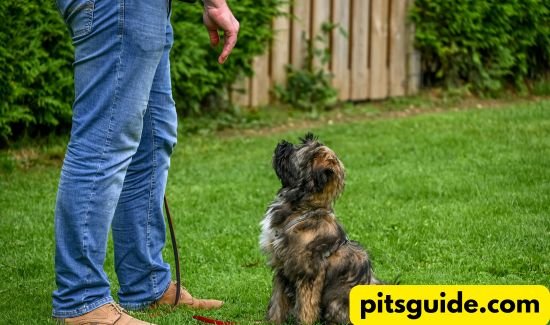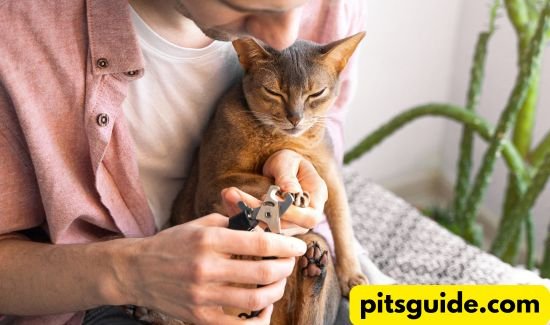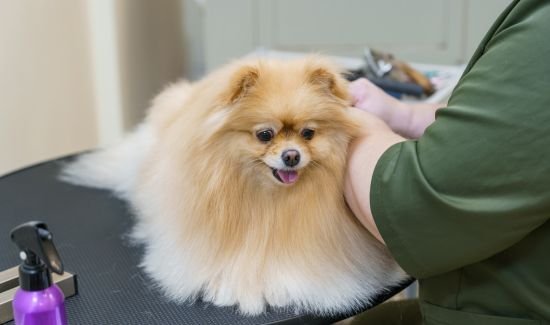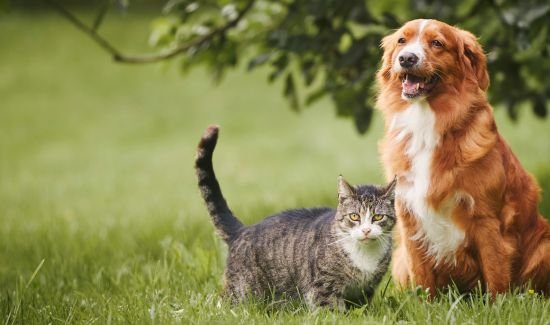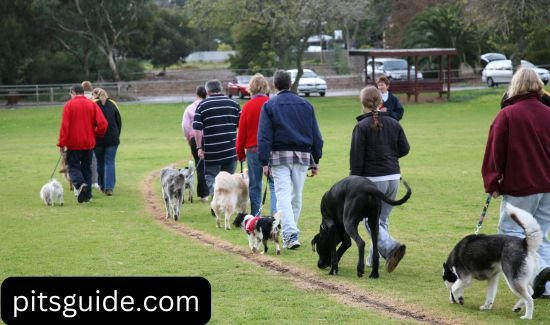Table of Contents
- Introduction
1.1 Transforming Pet Training through Hidden Rituals
1.2 Building a Strong Bond with Your Pet
1.3 Guide Overview - Key Takeaways
2.1 Secrets to Effortless Pet Training Mastery
2.2 The Psychology of Successful Pet Training
2.3 Positive Reinforcement for Long-Lasting Success - Understanding the Psychology Behind Successful Pet Training
3.1 The Role of Animal Behavior Science
3.2 Building Trust through Consistent Communication
3.3 Reading Pet Body Language Effectively - Essential Training Tips for Quick Results
4.1 Establishing a Consistent Routine
4.2 Using Positive Reinforcement Techniques
4.3 Breaking Down Training into Manageable Steps
4.4 Incorporating Physical Fitness into Training - Creating the Perfect Training Environment at Home
5.1 Setting Up Distraction-Free Zones
5.2 Organizing Training Tools and Rewards
5.3 Establishing a Regular Training Schedule - The Power of Positive Reinforcement Techniques
6.1 Understanding Positive Reinforcement Methods
6.2 Tools for Successful Positive Reinforcement
6.3 Building a Trusting and Happy Bond - Advanced Conditioning Strategies for Lasting Success
7.1 Timing and Reward Systems
7.2 Progressive Training Techniques
7.3 Developing Complex Behavior Chains - Overcoming Common Training Obstacles
8.1 Tackling Distractions During Training
8.2 Ensuring Consistency Across Training Methods
8.3 Addressing Breed-Specific Challenges - Integrating Training into Daily Routines
9.1 Morning and Evening Training Rituals
9.2 Using Playtime for Training Opportunities
9.3 Making Every Interaction a Learning Opportunity - Conclusion
10.1 Embracing Patience and Consistency
10.2 Celebrating Small Wins
10.3 Enjoying the Journey with Your Pet - Frequently Asked Questions (FAQ)
11.1 Essential Components of Successful Pet Training
11.2 Setting Up an Ideal Training Environment
11.3 Benefits of Positive Reinforcement Techniques
11.4 Overcoming Common Training Challenges
11.5 Integrating Training into Your Lifestyle
11.6 Advanced Conditioning for Long-Term Success
11.7 Leveraging Animal Behavior Science
Hidden Rituals for Effortless Pet Training Mastery
My living room fills with my pup’s happy panting. I smile, thinking back to when training was hard. Now, with patience and secrets, training is easy. This has changed my dog and our bond in amazing ways.
This guide shares secrets for a great pet partnership. It’s for new owners or those wanting to improve. You’ll learn to train with confidence and ease.
Key Takeaways
- Discover the hidden rituals that unlock effortless pet training mastery
- Understand the psychology behind successful pet training for quick results
- Learn essential training tips and create the perfect home environment
- Leverage the power of positive reinforcement techniques for lasting success
- Overcome common training obstacles and seamlessly integrate training into daily routines
Understanding the Psychology Behind Successful Pet Training
Good pet training is more than just teaching tricks. It’s about understanding animal behavior science. This helps us build a strong bond with our pets and get the best training results.
By learning about animal behavior, we can talk to our pets in a way they understand.In order to understand their feelings, we can also interpret their body language. This makes training fun and effective for both pets and owners.
The Role of Animal Behavior Science
Animal behavior science is key to good pet training. It helps us understand why pets act the way they do. By knowing this, we can create training plans that fit each pet’s unique needs.
This science helps us understand their language and body signals. It’s the foundation for training that is kind, effective, and lasts a long time.
Building Trust Through Consistent Communication
Trust is crucial for successful pet training. Positive and consistent communication helps pets feel safe and eager to learn. This way, we build a strong bond based on understanding and respect.
By rewarding good behavior and gently correcting bad ones, we help our pets grow. This partnership leads to amazing training achievements.
Reading Pet Body Language Effectively
Understanding pet body language is the secret to great training. Small signs like ear position and tail wagging tell us a lot. They show us how our pets feel and if they’re ready to learn.
By getting good at reading these signs, we can meet our pets’ needs better. Everyone finds training enjoyable and productive as a result.
| Aspect | Description | Importance for Workout Plans | Relevance to Health and Wellness | Impact on Athletic Performance |
| Animal Behavior Science | The study of how animals, including pets, think, feel, and behave | Provides insights into pet motivations and training methods for effective workout plans | Supports the overall health and well-being of pets through tailored training | Helps create training regimens that enhance a pet’s athletic abilities and performance |
| Trust-Building Communication | Establishing a positive, reward-based relationship between pet and owner | Fosters a cooperative environment for workout plan implementation | Promotes mental and emotional wellness for pets through positive reinforcement | Enables pets to feel secure and motivated during athletic training sessions |
| Body Language Interpretation | Reading and understanding the non-verbal cues of pets | Helps trainers adapt workout plans based on the pet’s comfort and engagement levels | Allows for timely identification and management of any health or wellness concerns | Ensures that training is tailored to the pet’s physical and mental state for optimal performance |
Essential Training Tips for Quick Results
To get quick and lasting results in pet training, you need a smart plan. Learning a few key techniques can help your pet reach their best. We’ll explore the main ideas that can change your training journey and help your pet succeed long-term.
Establish a Consistent Routine
Being consistent is key to good pet training. A regular training schedule, even just 10-15 minutes a day, makes a big difference. Choose the same time and place for training, and your pet will learn to look forward to it.
Focus on Positive Reinforcement
Positive reinforcement is vital for a strong bond with your pet and teaching good behaviors. Use treats, praise, or favorite toys to reward your pet for good behavior. This method builds trust and keeps your pet eager to learn.
Break It Down into Small Steps
Teaching complex behaviors in small steps is best. Break down training into easy goals and celebrate each step. This way, your pet gains confidence and mastery, leading to faster and better results.
Incorporate Strength Training and Endurance Building
Obedience training is important, but so is keeping your pet physically fit. Adding strength training and endurance activities to their routine prevents injuries and boosts health. Talk to a vet or trainer to create a fitness plan that fits your pet.
| Training Technique | Benefits | Example |
| Positive Reinforcement | Builds trust, motivates learning | Rewarding your pet with a treat when they sit on command |
| Gradual Approach | Fosters confidence, ensures mastery | Teaching a “stay” command by gradually increasing the duration over multiple sessions |
| Strength Training | Injury prevention, enhanced performance | Incorporating low-impact exercises like fetching or tug-of-war into your pet’s routine |
Using these key training tips will help you see quick and lasting results. Remember, being consistent, using positive reinforcement, and taking it one step at a time are key. Add strength and endurance training, and you’ll see your pet’s amazing growth.
Creating the Perfect Training Environment at Home
Creating a great training spot at home is key for easy pet training. Set up quiet areas, organize tools and treats, and keep a regular training time. This helps make training successful.
Setting Up Distraction-Free Zones
Find quiet spots in your home without too much noise or movement. These areas should be calm and free from distractions. Use baby gates or closed doors to keep these spots quiet for training.
Organizing Training Tools and Rewards
Collect all your training stuff, like treats and toys, and put them in one place. This keeps things tidy and helps your pet know what’s coming. Pick rewards that are good for them and motivate them during training.
Establishing a Regular Training Schedule
- Make a training plan that fits your and your pet’s life. Pick times like before meals or playtime for training. This makes things predictable and structured.
- Being consistent is important for good training. Try to stick to your plan, but adjust if your life changes.
- A regular schedule helps your pet get ready for training. Sessions become more enjoyable and productive as a result.
Creating the best training space at home is different for everyone. Try different things to find what works for you and your pet. This way, training can be a positive and rewarding experience for both.
| Training Tool | Purpose | Recommended Brands |
| Clicker | Precise marker for positive reinforcement | ClickerTraining, Starmark |
| Treat Pouch | Convenient storage for training rewards | Ruffwear, Outward Hound |
| Chew Toys | Engaging and rewarding playtime | Kong, Nylabone |
The Power of Positive Reinforcement Techniques
Positive reinforcement is key in pet training. It’s based on animal behavior science. This method is both successful and kind to our pets.
At the core of positive reinforcement is rewarding good behavior. We give pets treats, praise, or playtime. These rewards make them want to do more of the good stuff.
- Know what your pet likes: Watch your pet to see what they enjoy. This helps you train them better.
- Use a clicker for precise timing: A clicker helps you reward pets right when they do something good. It makes training quick and clear.
- Start simple and get harder: Begin with easy commands and add more as your pet gets better. This keeps them feeling successful and happy.
For pets, positive reinforcement makes training enjoyable and successful. It strengthens your bond and helps your pet learn good habits for life.
| Positive Reinforcement Techniques | Benefits |
| Clicker Training | Precise timing, clear communication, and positive associations |
| Treat-Based Rewards | Motivates pets, reinforces desired behaviors, and builds trust |
| Praise and Affection | Strengthens the human-pet bond, boosts confidence, and creates a positive training environment |
“The use of positive reinforcement is the most effective and humane way to train animals.It creates a trusting relationship and makes training fun for both the owner and the pet.”
Advanced Conditioning Strategies for Lasting Success
To get long-term results in pet training, you need a few key things. Learning advanced training methods is crucial. This helps your pet reach their best and keeps the good results going. We’ll look at how to use timing and rewards, step up training, and make complex commands easier.
Timing and Reward Systems
When you give rewards, timing is everything. Knowing when to give treats and praise makes training better. Try different reward schedules to keep your pet excited and eager to learn.
Progressive Training Methods
Start with simple commands and then add more. This way, your pet learns new things step by step. Use fitness strategies and progress tracking to help your pet grow and stay on track.
Behavior Chain Development
Behavior chains are a big step up in training. They link simple actions together for complex commands. This coaching technique makes your pet smarter and strengthens your bond.
| Conditioning Strategy | Key Factors | Benefits |
| Timing and Reward Systems |
|
|
| Progressive Training Methods |
|
|
| Behavior Chain Development |
|
|
Common Training Obstacles and Solutions
Training pets can be tough. But, with the right coaching advice and strategies, you can beat these challenges. This leads to better performance optimization and athletic development.
Distractions are a big problem in pet training. To fix this, make a special area for training. This area should be free from things that might distract your pet.
Training methods that change too much can confuse pets.They prefer consistency in everything.Make sure everyone in your family uses the same training methods.
- Identify and eliminate distractions during training sessions
- Maintain consistent training techniques across all family members
- Address breed-specific challenges through tailored training strategies
- Celebrate small victories and be patient with the training process
Some breeds need special coaching advice. Knowing your pet’s breed can help you train them better. This way, you can make sure they reach their best performance optimization and athletic development.
Patience, consistency, and being open to change are key. Celebrate small wins and enjoy the journey. This way, you and your pet can grow closer and reach new heights together.
| Common Training Obstacles | Effective Solutions |
| Distractions | Create a dedicated, distraction-free training environment |
| Inconsistent Training Techniques | Make sure everyone in the family uses the same training techniques. |
| Breed-Specific Challenges | Develop tailored training strategies based on your pet’s breed |
Integrating Training Into Daily Routines
Good pet training is more than just special sessions.It’s about incorporating it into your everyday routine.By adding training methodologies to your morning, evening, and playtime, you create a learning space. This helps your pet grow and learn more.
Morning and Evening Training Rituals
Begin your day with quick training exercises. This keeps your pet focused and helps them learn vital commands. Also, end the day with a calm training session. It helps your pet learn good behavior and skill enhancement.
Incorporating Training During Playtime
- Make playtime a chance to learn by adding training methodologies in.
- Give rewards for good behavior during play. This shows them actions lead to good things.
- Try simple tricks or commands during play. It keeps things fun and interactive.
Making Every Interaction a Learning Opportunity
See every moment as a chance to teach your pet. Use times like feeding, grooming, or just hanging out to teach good behavior and injury prevention. This way, your pet learns well and stays eager to learn.
“Integrating training into your daily routines is the key to unlocking your pet’s full potential.You’ll experience long-lasting benefits and a closer relationship with your pet if you make it a natural part of their lives.
Conclusion
Starting your pet training journey is exciting. Remember the important points we talked about. Using the right techniques, being patient, and understanding will help you succeed.
Positive reinforcement and knowing animal behavior will help you and your pet grow closer. This way, training becomes easy and fun for both of you.
Adding fitness advice and exercise instruction to your daily life is key. Celebrate every small win. With hard work, your pet will do great.
The real joy is the strong bond you’ll share with your pet. Enjoy the learning process and trust yourself. The adventure starts now, and there’s so much to explore.
FAQ
What are the essential components of successful pet training?
Good pet training needs clear communication and trust. It also requires knowing animal behavior and using positive methods.A healthy home atmosphere is also essential.
How can I set up the perfect training environment at home?
For a great training spot at home, make areas free from distractions. Organize your tools and rewards. Stick to a regular training time.
What are the benefits of using positive reinforcement techniques in pet training?
Positive methods in training are very good. They help pets and owners bond well. They make pets want to learn more and change their behavior for good.
How can I overcome common training obstacles?
To beat common training hurdles, like distractions, be consistent. Adjust your training methods. If needed, get help from experts.
How can I integrate pet training into my daily routine?
Mix training into your daily life by setting up morning and evening routines. Use playtime for training.Take advantage of every opportunity to learn with your pet.
What advanced conditioning strategies can I use for long-term training success?
For lasting success, master timing and rewards. Use progressive training and create complex behaviors for your pet.
How can I leverage animal behavior science to improve my pet training outcomes?
Knowing animal behavior science helps a lot. Build trust and understand your pet’s body language. This will make your training better.


